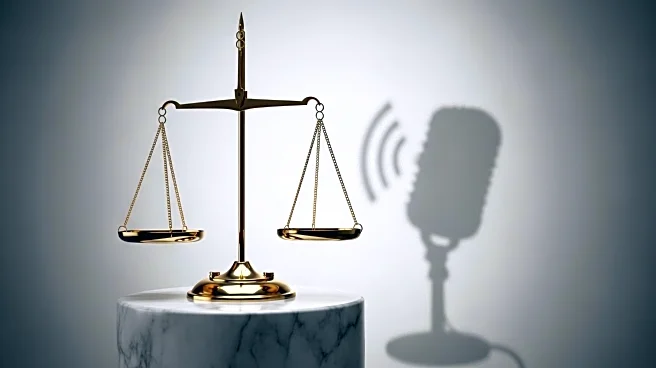What's Happening?
A recent opinion piece challenges the notion that media consolidation poses a significant threat to free speech, a concern that was more relevant in the 1970s. During that era, major networks like ABC, CBS, and NBC dominated over 90% of television viewership. However, the media landscape has drastically changed, with broadcast now accounting for only 20% of TV viewership. In May 2025, streaming services surpassed the combined share of broadcast and cable for the first time in U.S. history, capturing 44.8% of viewership. This shift indicates a transformation in the media industry, where a multitude of platforms now offer diverse voices, reducing the impact of media consolidation on free speech.
Why It's Important?
The evolution of the media landscape has significant implications for free speech and public discourse. With the rise of streaming services and digital platforms, consumers have access to a wider array of content and viewpoints than ever before. This diversification diminishes the influence of traditional media giants and potentially enhances democratic engagement by providing more opportunities for varied perspectives. The shift also impacts advertising strategies, content creation, and media consumption patterns, influencing how information is disseminated and received by the public.
What's Next?
As streaming continues to grow, traditional media companies may need to adapt their strategies to remain competitive. This could involve investing in digital platforms, creating more diverse content, or forming partnerships with streaming services. Policymakers might also consider revisiting regulations related to media ownership and consolidation to ensure they reflect the current media environment. The ongoing changes in media consumption could lead to further innovations in how content is produced and distributed.
Beyond the Headlines
The transformation of the media landscape raises questions about the future of journalism and the role of traditional media outlets. As digital platforms gain prominence, issues such as misinformation, content moderation, and the sustainability of quality journalism become increasingly relevant. The shift also highlights the importance of media literacy, as consumers navigate a complex array of information sources.











